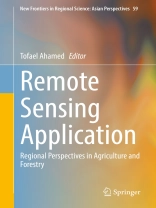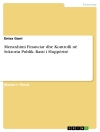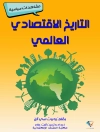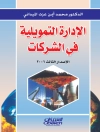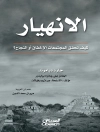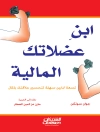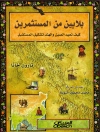This book focuses solely on the issues of agriculture and forest productivity analysis with advanced modeling approaches to bring solutions to food-insecure regions of South and Southeast Asia. Advanced modeling tools and their use in regional planning provide an outstanding opportunity to contribute toward food production and environments. In this book, leading-edge research methodologies related to remote sensing and geospatial variability of soil, water, and regional agricultural production indicators and their applications are introduced together—a unique feature of the book is the domain of regional policy perspectives and allied fields. In regional policy planning, agriculture and forestry have a key role in food security and environmental conservation that depends on the geo-spatial variability of these factors. Over the years, nature and climate have determined the variability of soil type, soil quality, geographical deviation for habitat, water quality, water sources, urban influences, population growth, carbon stock levels, and water resources with rain-fed or irrigated land use practices. In addition, human nutritional values and dietary habits have brought cultural adaptation of either mono- or multi-cropping patterns in the region.
To encompass all these above mentioned factors and classify regional variability for policy planning, satellite remote sensing and geographical information systems have the immense potential to increase agricultural and forest productivity to ensure the resilience of its sustainability. Therefore, the 13 chapters presented in this book introduce modeling techniques using the signatures of vegetation and water indices, land use and land change dynamics, climatic, and socioeconomic criteria through spatial, temporal, and statistical analysis. As well, remote sensing and in-depth GIS analysis are integrated with machine and deep learning algorithms to address natural uncertainties such as flash floods, droughts, and cyclones in agricultural production management.
Tabela de Conteúdo
Chapter 1. A Review of Remote Sensing Applications in Agriculture and Forestry to Establish Big Data Analytics.- Chapter 2. Calorie-based Seasonal Multicrop Land Suitability Analysis Using GIS and Remote Sensing for Regional Food Nutrition Security in Bangladesh.- Chapter 3. Agricultural Land Suitability Assessment Using Satellite Remote Sensing-Derived Soil-Vegetation Indices.- Chapter 4. Land Suitability Assessment for Cassava Production in Indonesia Using GIS, Remote Sensing and Multi-criteria Analysis.- Chapter 5. Drought Estimation from Vegetation Phenology Analysis of Maize in Indonesia Using Deep Learning Algorithm.- Chapter 6. Land Suitability Analysis for Grapes (Vist Vinefra L.) Production Using Satellite Remote Sensing, GIS and Analytical Hierarchy Process.- Chapter 7. GIS-based MCA Modeling to Locate Suitable Industrial Sites in Suburb Areas of Bangladesh for Sustainability of Agricultural Lands, – Chapter 8. Change Detection and Land Suitability Analysis for Extensionof Potential Forest Areas in Indonesia Using Satellite Remote Sensing and GIS.- Chapter 9. Estimating productivity and carbon stock using phonological indices from satellite remote sensing in Indonesia.- Chapter 10. GEE-based Spatiotemporal Evolution of Deforestation Monitoring in Malaysia and its Drivers.- Chapter 11. Climate-Resilient Agriculture Assessment, Targeting and Prioritization for the Adaptation and Mitigation Initiative in Agriculture (AMIA) in the Cordillera Administrative Region, Philippines.- Chapter 12. A Review on Innovation of Remote Sensing Technology based on Unmanned Aerial Vehicle for Sugarcane Production in Tropical Region.- Chapter 13. Big Data Scheme from Remote Sensing Applications: Concluding Notes for Agriculture and Forestry Applications.
Sobre o autor
Tofael Ahamed is an associate professor from University of Tsukuba, Japan and recognized as one of the best faculty members of the university. His research focuses on smart application of remote sensing and AI-Io T technology in agriculture. Dr. Ahamed leads research supported by the Japanese Society for Promotion Science, University of Tsukuba and international companies. Most of his research articles are published in Transactions of ASABE, Biosystems Engineering, Computer and Electronics in Agriculture, Sensors, Remote Sensing and Asia-Pacific Journal of Regional Science. He is also the author of several textbooks: Bioproduction Engineering for Precision Agronomics, Sustainability and Data to Knowledges for Agricultural Research Methodologies.
